Driving your Tesla through France? You’re in luck. With over 100 Supercharger stations strategically positioned across the country, France offers one of Europe’s most robust Tesla charging networks. Whether you’re cruising down the Mediterranean coast, exploring the wine regions, or navigating from Paris to the Alps, you’ll find charging seamless and convenient.
But here’s what many Tesla owners don’t realize: while Superchargers are undeniably convenient, they’re not always your cheapest—or even most practical—option. Understanding when to use Superchargers versus alternative charging networks can save you significant money and time during your French adventure.
This guide reveals everything you need to know about charging your Tesla in France, from Supercharger locations and costs to money-saving alternatives that work perfectly with your Tesla.
Tesla’s Supercharger Network in France: The Overview
Total Supercharger Stations: 100+ locations (and growing) Total Charging Stalls: 1,000+ individual charging points Coverage: Excellent on major highways, good in cities, expanding in rural areas Technology: Mix of V2, V3, and newer V4 Superchargers
Key Advantage: Recent installations feature V4 charging points with solar canopies, representing Tesla’s latest charging technology with improved power delivery and future-proofing for higher charging speeds.
[INTERNAL LINK: Best EV Charging Apps for Tourists Visiting France in 2025] helps you find both Tesla and non-Tesla charging options throughout your journey.
Supercharger Costs: What You’ll Actually Pay
For Tesla Owners
Standard Pricing:
- €0.37-0.52 per kWh (varies by location)
- Peak hours: €0.48-0.52 per kWh
- Off-peak hours: €0.37-0.43 per kWh
Idle Fees:
- €0.50 per minute after grace period (when station is 50%+ full)
- €1.00 per minute when station is 100% full
- Grace period: 5 minutes after charging completes
Example Costs:
- Model 3/Y (adding 50 kWh): €18.50-26.00
- Model S/X (adding 70 kWh): €25.90-36.40
For Non-Tesla EVs
Tesla has opened select Superchargers to other brands through the Tesla app:
Pricing for Non-Tesla:
- €0.55-0.70 per kWh (approximately 30-40% premium)
- Same idle fees apply
- Requires Tesla app with payment method
Availability: Currently limited to specific stations marked “Open to Non-Tesla” in the app
How Much Does It Cost to Charge an Electric Car in France? provides detailed cost comparisons between Tesla Superchargers and alternative networks.
Strategic Supercharger Locations for Tourists
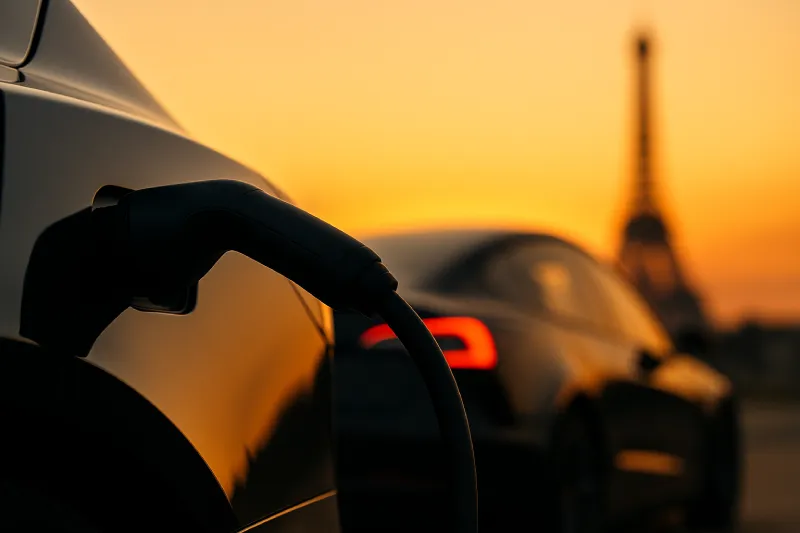
Major Highway Corridors
Paris to Lyon (A6):
- Mâcon (24 stalls)
- Beaune (12 stalls)
- Auxerre (8 stalls)
Paris to Bordeaux (A10):
- Orleans (16 stalls)
- Tours (12 stalls)
- Poitiers (8 stalls)
Paris to Nice (A6/A7):
- Lyon (multiple locations, 40+ stalls)
- Valence (16 stalls)
- Orange (12 stalls)
- Aix-en-Provence (20 stalls)
Paris to Toulouse (A20):
- Limoges (12 stalls)
- Brive (8 stalls)
- Cahors (8 stalls)
City Locations
Paris Area:
- Velizy (26 stalls) – near Versailles
- Marne-la-Vallée (16 stalls) – near Disneyland
- Roissy (12 stalls) – near airport
Other Major Cities:
- Lyon: 5 locations, 50+ total stalls
- Marseille: 3 locations, 30+ stalls
- Bordeaux: 2 locations, 20+ stalls
- Nice: 2 locations, 16+ stalls
Tourist Destination Stations
French Alps (Ski Areas):
- Chambéry (12 stalls)
- Grenoble (16 stalls)
- Albertville (8 stalls)
Wine Regions:
- Beaune, Burgundy (12 stalls)
- Reims, Champagne (8 stalls)
- Bordeaux area (multiple locations)
Coastal Areas:
- Nice (16 stalls)
- Cannes (8 stalls)
- Saint-Tropez area (8 stalls)
Where to Charge Your Electric Car in Paris: Top 10 Convenient Locations covers Paris city charging beyond Superchargers.
When to Use Superchargers (And When Not To)
Perfect Supercharger Scenarios
1. Highway Road Trips Superchargers excel on long-distance highway travel where speed matters. Adding 300km of range in 20 minutes beats stopping for an hour at slower alternatives.
2. Time-Sensitive Travel When you need to maintain a tight schedule, Superchargers’ reliability and speed justify the premium cost.
3. Unfamiliar Areas In regions you don’t know well, Superchargers eliminate guesswork about connector compatibility, payment methods, and station functionality.
4. Peak Tourist Season During busy periods, Superchargers often have better availability than public networks due to their high stall counts.
When Alternatives Make More Sense
1. Overnight Charging Hotel or accommodation charging costs 40-60% less than Supercharging and happens while you sleep.
2. City Exploration Urban public networks offer convenient destination charging while you visit attractions, often at lower costs.
3. Extended Stays If spending several hours at a location (museum, restaurant, shopping), slower AC charging costs half as much.
4. Budget-Conscious Travel Public networks, especially municipal ones, typically charge €0.25-0.40 per kWh versus Supercharger’s €0.40-0.52.
Alternative Charging Networks That Work With Tesla
Your Tesla can charge at any European standard charging station. Here’s what works best:
Public DC Fast Charging
Ionity Network:
- 70+ stations on French highways
- 350 kW capability (though your Tesla may not utilize full speed)
- Cost: €0.69-0.79 per kWh standard; €0.30-0.35 with partner subscription
- When to use: Highway travel when Superchargers are busy or inconveniently located
Izivia (EDF):
- 350+ fast-charging stations
- 50-100 kW charging speeds
- Cost: €0.48-0.60 per kWh
- When to use: Alternative to Superchargers with similar convenience
TotalEnergies:
- 200+ stations at fuel stops
- 50-100 kW charging
- Cost: €0.48-0.56 per kWh
- When to use: Familiar fuel station stops with amenities
AC Public Charging
Belib’ (Paris):
- 2,000+ points in Paris
- 7-22 kW charging
- Cost: €0.25-0.35 per kWh
- When to use: City exploration, overnight street parking
Municipal Networks:
- Available in most French cities
- 7-22 kW typical
- Cost: €0.20-0.40 per kWh (often cheapest option)
- When to use: Town center parking, extended stops
Best EV Charging Apps for Tourists Visiting France in 2025https://francechargefinder.online/best-ev-charging-apps-tourists-france/ shows you how to access all these networks through unified apps.
Cost Comparison: Supercharger vs Alternatives
Scenario: Paris to Nice Road Trip (930km)
Option 1: Superchargers Only
- Charging needed: ~160 kWh
- Average cost: €0.45/kWh
- Total: €72
- Charging time: 3 stops × 25 minutes = 75 minutes
Option 2: Mixed Strategy (Supercharger + Hotel)
- Hotel overnight charging: 70 kWh @ €0.22/kWh = €15.40
- One Supercharger top-up: 45 kWh @ €0.45/kWh = €20.25
- One Izivia stop: 45 kWh @ €0.52/kWh = €23.40
- Total: €59.05
- Extra time investment: +60 minutes (overnight doesn’t count)
Option 3: Optimal Budget Strategy
- Hotel overnight: 70 kWh @ €0.22/kWh = €15.40
- Lunch AC charging in Lyon: 40 kWh @ €0.32/kWh = €12.80
- Final Supercharger: 50 kWh @ €0.45/kWh = €22.50
- Total: €50.70
- Extra time investment: +90 minutes (charging during lunch/overnight)
Savings: €21.30 (30% less than Supercharger-only)
How Much Does It Cost to Charge an Electric Car in France? provides detailed breakdowns for every scenario.
Using Your Tesla App for Navigation and Charging
Built-In Trip Planner
How it works:
- Enter destination in navigation
- Tesla automatically plans Supercharger stops
- Pre-conditions battery for optimal charging speed
- Updates route based on real-time availability
Pro tips:
- The planner is conservative—you often have more range than it suggests
- Manually adjusting charge level at stops can save time
- Consider alternative stops during peak hours
Real-Time Stall Availability
Features:
- See available stalls before arrival
- Peak pricing notifications
- Estimated wait times when busy
- Alternative nearby Superchargers suggested
Payment and Account Management
Setup:
- Payment method stored in Tesla account
- Automatic billing when you plug in
- Monthly invoice through Tesla app
- No need for RFID cards or separate apps (for Superchargers)
Tesla-Specific Charging Considerations
Pre-Conditioning for Faster Charging
What it does: Warms battery to optimal temperature 30-45 minutes before Supercharger arrival
How to activate: Navigation to Supercharger automatically activates it
Benefit: Adds 25-40% more charging speed in first 10 minutes
Pro tip: In winter, pre-conditioning is essential for acceptable charging speeds
Charging Curve Optimization
Understanding your Tesla’s charging curve:
- 0-50%: Maximum charging speed (150-250 kW depending on model)
- 50-80%: Gradually declining speed
- 80-100%: Significantly slower (not recommended except when necessary)
Strategy: Charge to 60-70% at Superchargers unless you need more for next leg. This minimizes time and cost.
Battery Health and DC Fast Charging
Frequency concerns:
- Regular Supercharging won’t significantly degrade your battery
- Tesla’s thermal management protects battery health
- Mixing AC and DC charging is ideal but not necessary
Best practices:
- Avoid charging to 100% regularly (stop at 80-90%)
- Don’t leave battery at very low charge (<10%) for extended periods
- Use AC charging when convenient to balance with DC fast charging
Regional Charging Strategies
Paris and Northern France
Supercharger density: Excellent Strategy: Use Superchargers for highway travel; switch to Belib’ or parking garage charging in Paris proper Alternative networks: Belib’, Izivia urban stations
French Riviera
Supercharger density: Good on A7/A8 highways, moderate in cities Strategy: Coastal travel benefits from hotel charging; use Superchargers for highway segments Peak season note: High demand in summer—charge early morning or evening
French Alps
Supercharger density: Growing but still limited Strategy: Charge fully before entering mountain areas; identify backup AC options at ski resorts Winter consideration: Cold weather reduces range significantly—plan extra charging stops
Wine Country (Burgundy, Bordeaux)
Supercharger density: Moderate Strategy: Mix Superchargers on main routes with destination charging at hotels/vineyards Hidden benefit: Many upscale hotels in wine regions offer free guest charging
Troubleshooting Common Issues
“Supercharger Busy” Alert
Solutions:
- Arrive during off-peak hours (before 10 AM or after 8 PM)
- Use app to check real-time availability before driving there
- Have backup Supercharger location identified
- Consider public DC fast chargers as alternative
Slow Charging Speed
Common causes:
- Battery is cold (use pre-conditioning)
- Battery already above 70% (normal behavior)
- Station operating at reduced capacity
- Sharing power with adjacent stall (V2 Superchargers)
Solutions:
- Park in odd or even numbered stalls (not adjacent to occupied stall on V2)
- Wait for battery to warm up
- Move to different stall if speed doesn’t improve after 5 minutes
Payment or Account Issues
Solutions:
- Verify payment method is current in Tesla account
- Check for outstanding balance blocking charging
- Use backup payment method via Tesla app
- Contact Tesla support through app (24/7 availability)
Connector Won’t Release
Solutions:
- Press unlock on car or app to release connector
- Ensure charging session is stopped in Tesla app
- Manual release: Open trunk, pull emergency release tab
- Contact Tesla support if manual release fails
Tesla Ownership Benefits in France
Access to Exclusive Locations
Some Supercharger stations are in premium locations not available to public networks:
- Shopping centers (La Vallée Village near Paris)
- Hotels (Novotel partnerships)
- Strategic highway rest areas
Reliability Advantage
Tesla Superchargers typically have:
- Higher operational uptime (95%+ vs. 85-90% for public networks)
- Faster repair response
- Better maintained facilities
- Cleaner stations with more amenities
Navigation Integration
Built-in routing with Superchargers means:
- No need for separate charging apps for basic needs
- Automatic battery pre-conditioning
- Real-time availability updates
- Optimized routing considering elevation, weather, traffic
Money-Saving Strategies for Tesla Owners
Strategy #1: Membership Discounts
Some networks offer Tesla owners special rates through partnership programs:
- Check for Ionity partnership through your Tesla delivery
- Some hotels offer free Tesla charging to guests
- Ask about EV discounts at accommodations
Strategy #2: Time-of-Day Charging
Supercharger peak pricing:
- Peak (typically 4-8 PM): €0.48-0.52/kWh
- Off-peak (typically 10 PM-6 AM): €0.37-0.43/kWh
Savings: Charging at night saves €5-7 per session on long charges
Strategy #3: Charging Level Optimization
Instead of always charging to 90%, determine minimum necessary:
- Paris to Lyon: 65% sufficient (with backup margin)
- Short city trips: 40-50% adequate
- Mountain driving: 80% recommended (more buffer needed)
Savings: Charging to 65% instead of 90% saves 15-20 minutes and €4-6 per stop
Strategy #4: Hotel Charging Priority
Book hotels with EV charging when possible:
- Often free or low cost (€5-15 per night)
- Eliminates need for next-day Supercharger stop
- More convenient than early morning charging runs
Charging Your Electric Car at French Hotels: What You Need to Know lists hotels with Tesla-friendly charging.
Strategy #5: Municipal Network Usage
In cities, use municipal charging:
- 40-50% cheaper than Superchargers
- Perfect for overnight parking
- Often located near tourist attractions
When it works best: Multi-day city stays where time isn’t critical
Planning Your French Tesla Road Trip
Pre-Trip Preparation
One Week Before:
- Update Tesla software to latest version
- Verify Supercharger locations on planned route
- Download backup charging apps (Chargemap, Izivia)
- Check hotel charging availability
Day Before Departure:
- Charge to 90-100% at home or hotel
- Verify all Superchargers along route are operational (check Tesla forums)
- Have backup charging locations identified
During Your Trip
Daily routine:
- Start each day with 70-90% charge when possible
- Check next day’s route each evening
- Adjust charging strategy based on tomorrow’s plans
- Take advantage of free hotel charging
Route flexibility:
- Tesla navigation provides excellent routing, but sometimes alternatives save time/money
- Consider scenic routes with good charging coverage
- Build in backup time for unexpected detours or charging delays
The Future of Tesla Charging in France
V4 Superchargers Rolling Out:
- Higher power capability (up to 350 kW in future)
- Better cable management
- Integrated payment screens for non-Tesla vehicles
- Solar canopies at many locations
Network Expansion:
- 30+ new locations planned for 2025-2026
- Focus on filling gaps in rural areas
- Additional urban charging hubs
Non-Tesla Access:
- Expanding to more Supercharger locations
- Potential membership program for non-Tesla owners
- Standardization of charging experience
Quick Reference Guide
Best for Different Scenarios:
| Scenario | Recommended | Cost | Speed |
|---|---|---|---|
| Highway travel | Supercharger | €€€ | ⚡⚡⚡ |
| City exploration | Municipal/Belib’ | € | ⚡ |
| Overnight | Hotel charging | € | ⚡ |
| Meal breaks | Public AC (22kW) | €€ | ⚡⚡ |
| Emergency/urgent | Supercharger | €€€ | ⚡⚡⚡ |
| Budget conscious | Municipal networks | € | ⚡ |
Frequently Asked Questions
Can I charge my Tesla at non-Tesla stations in France?
Yes, absolutely. Your Tesla works with all European standard charging stations using Type 2 (AC) and CCS (DC) connectors. You’ll need the appropriate charging apps for non-Tesla networks (Chargemap, Izivia, etc.), but the physical compatibility is built-in.
Do I need a charging card or can I use the Tesla app?
For Superchargers, only the Tesla app is needed—payment is automatic. For non-Tesla stations, you’ll need the network’s app or a universal charging card like Chargemap Pass. Most Tesla owners find 2-3 apps sufficient for comprehensive coverage.
Are Superchargers always more expensive than alternatives?
Not always, but usually. Superchargers cost €0.37-0.52/kWh compared to municipal networks at €0.20-0.40/kWh. However, Superchargers are often cheaper than premium networks like Ionity (€0.69/kWh without subscription) and comparable to other highway fast-charging options.
How long does it take to charge at a Supercharger?
Typical times:
- 10-50%: 15-20 minutes
- 10-80%: 25-35 minutes
- 10-100%: 45-60 minutes (not recommended)
Charging slows significantly above 80%, so most stops should target 60-70% unless more range is required.
What happens if I overstay at a Supercharger?
Idle fees apply after charging completes: €0.50/minute when station is 50%+ full, €1.00/minute when 100% full. You have a 5-minute grace period. Set phone alerts for charge completion to avoid fees, which can quickly exceed your charging cost.
Can non-Tesla vehicles use Superchargers in France?
Yes, at select “Open to Non-Tesla” locations marked in the Tesla app. Non-Tesla vehicles pay approximately 30-40% more (€0.55-0.70/kWh). Access requires downloading the Tesla app and creating an account with payment method.
Should I charge to 100% before a long trip?
For long trips (400+km), charging to 90-95% is fine. Avoid regularly charging to 100% as it accelerates battery degradation. The extra 10-15% rarely justifies the time spent waiting for the slow final charging phase.
What’s the difference between V2, V3, and V4 Superchargers?
- V2: Up to 150 kW, shares power between adjacent stalls
- V3: Up to 250 kW, dedicated power per stall (faster)
- V4: Up to 250 kW (350 kW capable), longer cables, payment screens
For your charging experience, V3 and V4 stations provide noticeably faster charging without power-sharing limitations.
Conclusion
Charging your Tesla in France combines the convenience of an extensive Supercharger network with the cost-saving potential of alternative charging options. While Superchargers provide unmatched speed and reliability for highway travel, smart Tesla owners mix in hotel charging, municipal networks, and public AC charging to save 30-50% on charging costs without sacrificing convenience.
The key is matching charging strategy to your travel style:
- Time-sensitive travelers: Stick primarily to Superchargers
- Budget-conscious explorers: Mix Superchargers with overnight and destination charging
- Extended stays: Utilize local networks and hotel charging extensively
With over 100 Supercharger locations and excellent coverage from alternative networks, France provides one of Europe’s best Tesla driving experiences. Plan your route, download backup charging apps, and embrace the flexibility of multiple charging options.
For comprehensive charging information across France and to discover charging options beyond Superchargers, visit FranceChargeFinderOnline for detailed regional guides and real-time charging station information.
Ready to explore France in your Tesla? With Superchargers every 150km on major routes and countless alternative options in cities and towns, your electric French adventure awaits!

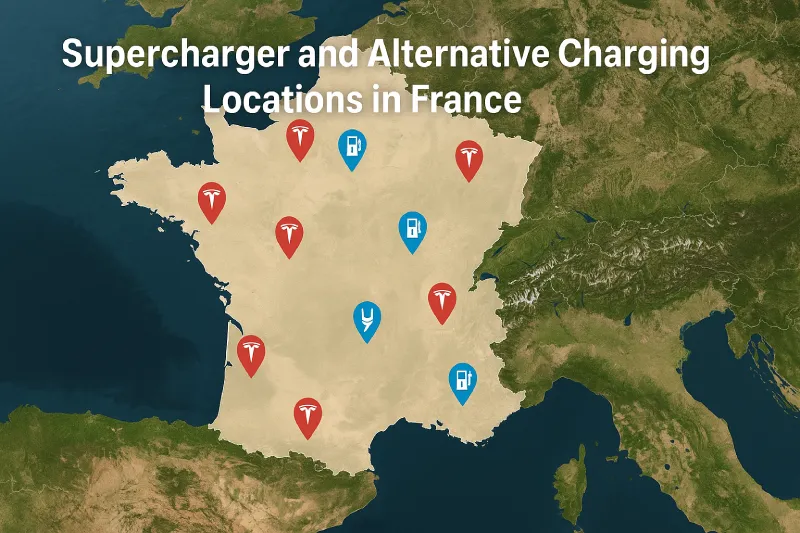
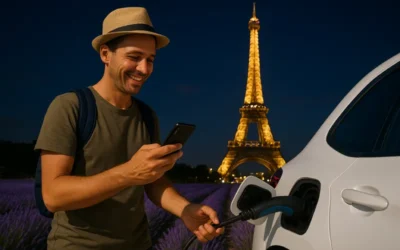
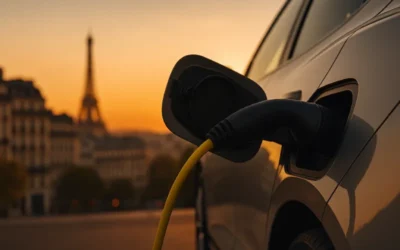
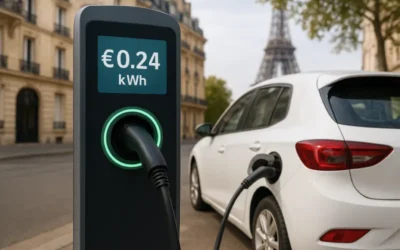
Leave a Reply